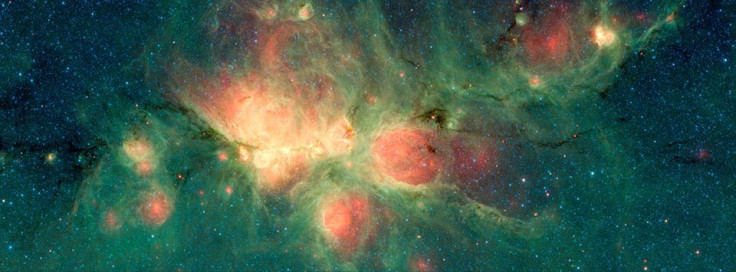NASA’s Spitzer Captures Stunning Photo Of Cat’s Paw Nebula

NASA’s Spitzer Space Telescope was able to capture a stunning photo of a colorful nebula that resembles a pinkish paw of a cat. According to the agency, the colors in the nebula were caused by the various cosmic materials interacting inside it.
Due to its appearance, the massive cloud of gas and dust has been named by NASA as the Cat’s Paw Nebula. The agency noted that this region is located within the Milky Way galaxy inside the Scorpius constellation. It is situated about 1.3 to 1.7 kiloparsecs from Earth, which is equivalent to about 4,200 to 5,500 light-years.
As shown in Spitzer’s latest photos, various colors can be seen within the Nebula. These colors represent the various wavelengths of cosmic materials within the nebula. The colors appear visible due to the space telescope’s infrared imaging capabilities.
For instance, the black streaks running across the photo are actually regions filled with gas and dust, which contribute to the formation of stars. As for the reddish and pinkish areas within the nebula, these are actually cosmic bubbles that expanded after the stars of the Cat’s Paw Nebula interacted with the gas surrounding them.
“The bright, cloudlike band running left to right across the image shows the presence of gas and dust that can collapse to form new stars,” NASA explained in a statement. “The black filaments running through the nebula are particularly dense regions of gas and dust. The entire star-forming region is thought to be between 24 and 27 parsecs (80-90 light-years) across.”
“The stars that form inside the nebula heat up the pressurized gas surrounding them, such that the gas may expand and form ‘bubbles,’ which appear red in this image. Asymmetric bubbles may ‘burst, creating U-shaped features,” the agency continued.
As for the green cloud-like area within the nebula, these are actually regions filled with radiation that were illuminated by the collision of stars and other cosmic materials.
“The green areas show regions where radiation from hot stars collided with large molecules and small dust grains called “polycyclic aromatic hydocarbons” (PAHs), causing them to fluoresce,” NASA explained.
© Copyright IBTimes 2024. All rights reserved.





















